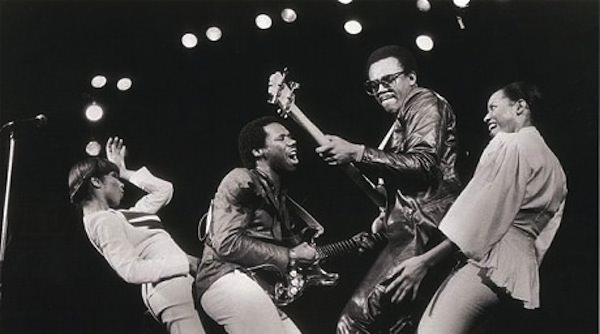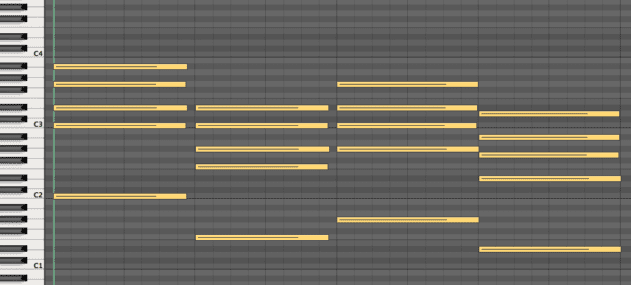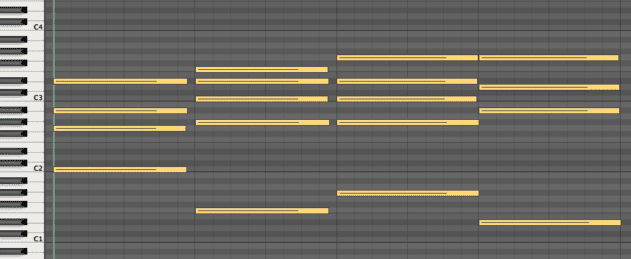Dance music theory expert Oliver Curry examines how classic disco uses chord inversions and careful placement of instruments to great effect, and explains how the same principles can be applied to virtually any genre.
In this edition of Passing Notes we’re focussing on disco chords, but the lessons we’ll learn don’t just apply to disco (or even, necessarily, just to chords). The classic disco chord sound is not only characterised by the notes used in constructing the chord but also by its voicing and timing – the placement of the chord in the bar and its rhythmic interaction with other elements. It’s these techniques which we’ll examine to understand how they add groove and feel to the chord progression.
Voicing and inversion
The term ‘voicing’ is used to describe the arrangement of the notes within a chord. As with a lot of dance music, the primary chords we hear used in disco tracks are minor and major triads and 7s, which we discussed in this previous Passing Notes.
For a quick example of how different voicings can be applied, we’ve written a simple piano chord progression in the key of C minor: Cm7, Fm7, Abmaj7, Ebmaj7.
In this first example we can see the chords are all constructed in ‘root position’, using the root of the chord as the bass note (played in two octaves), then the 3rd, 5th and 7th in ascending pitch order.
The human ear tends to hear the highest notes in a chord progression as a form of melody. We can see that the top notes of our chords make large jumps, which could make our progression sound a little disjointed.
The solution to this potential problem is to voice the chords differently and use chord inversions. A chord can be said to be inverted when the lowest note isn’t the root (we’re treating the root note an octave down as a separate bass note rather than part of the chord played by the right hand). A simple example would be a C major triad voiced from lowest pitch to highest E, G, C (as opposed to the standard C, E, G). By moving the C up an octave we’ve created an inversion. We also examined this technique in our Breakdown feature on Tensnake’s ‘Coma Cat’.
Below, we’ve voiced the same chord progression differently, inverting chords so that the changes in the perceived melody line don’t stand out so much. This technique is useful whenever a chord progression needs to feel more relaxed, or whenever you want to shift attention away from the implied melody of the chords and onto another instrument or a vocal.
Each chord played comprises the same notes as it did previously, and the chord names are all the same. The difference here is that some notes already playing in the left hand part have been removed from the right hand (i.e. the C and Eb in the first and last chords). Also we can see and hear how the inversion of the second chord, Fm7, allows the F to be the highest note in that chord.
Audio PlayerSister Sledge
For another example of chord voicing and inversions, let’s look at Sister Sledge’s ‘Lost In Music’ – written by Chic’s Nile Rodgers and Bernard Edwards – to see how this simple technique can help maintain continuity.
This is how the basic piano chords are played in the track’s verses, starting at 1:06:
The chords are Dm7, C, Gm->G, Bbmaj7, C, Dm7. The G chord slides from a minor to major 3rd, a technique commonly used in jazz, gospel, blues and soul. Note again how the highest notes of each chord form a tighter, closer progression than they would if the chords were formed in the root position. In root position the chords would look and sound like this:
Audio PlayerWe can hear how the chords played in root position have a loose, disjointed and less natural feel. Voicing the chords to sit in a smaller frequency range also gives other instrumental parts more room in the mix.





12.39 AM
Very good stuff. Thanks for sharing.
04.33 AM
That was awesome, thanks heaps for putting these tips up Oliver!
04.04 PM
Just being able to visualise the slide in the piano chord is so helpful. Loving these articles.
08.29 PM
Nifty examples! I just want to point out that while inversions refer to what part of the chord is on the bottom, the specific term for voicing the melodic lines so that they aren’t disjointed is “voice leading”. You’ll find this a lot in baroque/classical music and (as Oliver points out in this article) still applies today. I also think contrary motion is really cool and adds a lot of interest. (When your bass line goes down and your melody goes up or vice versa.)
07.32 AM
Wow that was quite great.
05.15 PM
Thanks for this!im loving your articles!keep up the good work!
03.30 AM
Hey – you mean Cm7, Fm7, Abmaj7, Ebmaj7, not Cm7, Fm7, Amaj7, Ebmaj7!
05.35 PM
@Dutch: I did indeed mean Abmaj7, well spotted!
It’s been changed now, cheers!
11.23 AM
Oliver can you make a tutorial or give tips about how to make those disco strings that play at the beginning of each bar? What notes should be played? What sort of attack/release or compression creates an authentic feel? Can’t quite get them right.
06.53 PM
Thank you! I was always unsure about where to invert the chords! I always thought it was, as you put it, ” sit in a smaller frequency range”. Finally nice to hear from someone else that’s how they do it!!!!!!!
09.58 PM
Oliver these tutorials are fantastic. I would tell you to write a book, but it would be difficult to make it as interactive as your articles